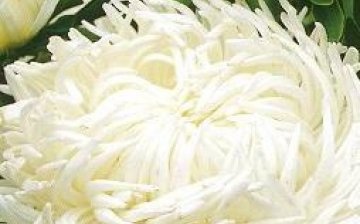Claw aster
When choosing an annual plant for the formation of a flower bed, one cannot but recall the aster. Claw aster is a relatively new variety of aster, which has its own characteristics. This variety can reach a length of 50 cm, and the flower diameter reaches 10 cm.
Asters reproduce only by seeds. Planting can be carried out in any soil, but fertile soils have a better effect on the growth of this plant. To form a beautiful flower bed, it is best to first grow aster seedlings. Seedlings can be planted both in open ground and in greenhouses starting from March.
When growing seedlings, a temperature of at least 12 degrees is required. Aster seedlings do not need abundant watering, therefore, do not moisten the soil too much. When growing, seedlings can be fertilized with a complex fertilizer for flowering plants.
Seedlings are planted at a distance of at least 7 cm from each other. The landing site should be sunny, and asters should not grow on it earlier (up to 5 years). Organic fertilizers (up to 5 kg of humus, peat) and mineral fertilizers (1 tablespoon of potassium sulfate and superphosphate) per 1 square meter are applied to the planting site.
To prevent diseases of the claw aster, it must be sprayed. For this purpose, use Hom (50 grams per 10 liters of water) or Tomaz (4 ml per 10 liters of water). When pests appear (aphids, spider mites), aster can be treated with appropriate preparations, for example Iskra.
If you decide to cut a bouquet of asters, then you should know some points. Asters do not bloom in a vase of water. Therefore, they are cut off in the morning, after the aster is dissolved. Water for asters is changed 2 times a week. With proper care, asters in a vase will last up to 3 weeks. Good luck with growing asters and good flowers.



